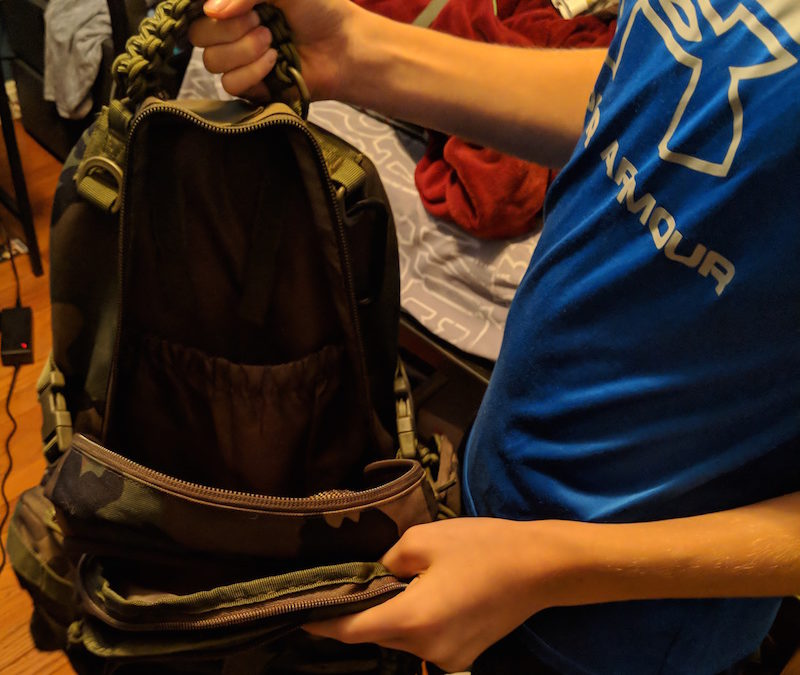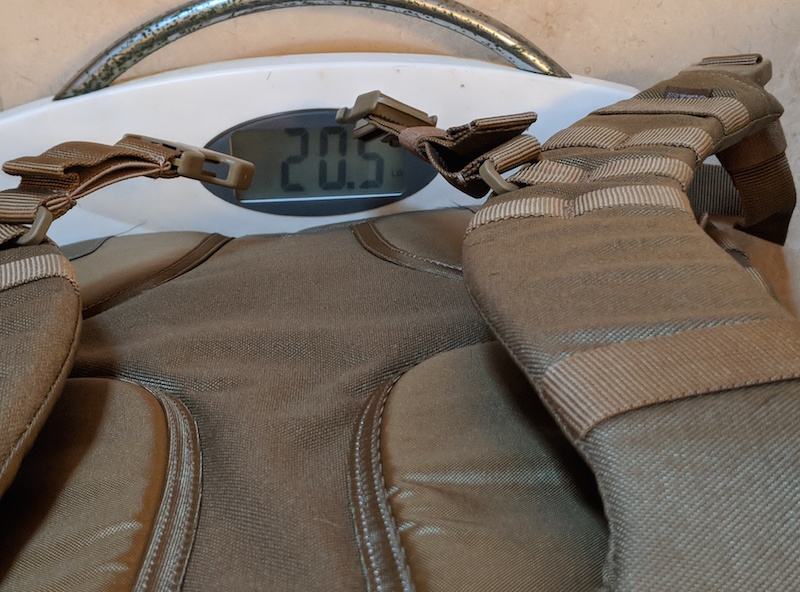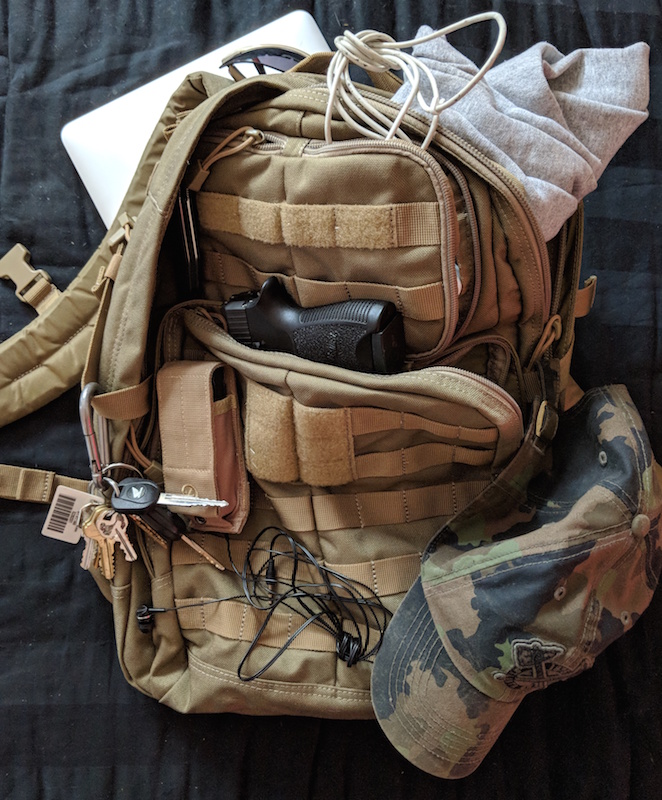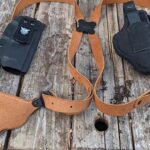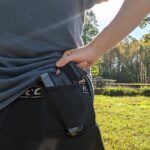I was fortunate enough to be brought up in an environment that fostered preparedness. From an early age, I was introduced to the basics of firearm handling, care, and maintenance. The more I watch the news and hear about active shooters, human trafficking, and the like, the more I am convinced that children be prepared. We’re going to discuss how to put together an EDC kit for kids, no matter what their age.
I wish that it wasn’t a necessity, but the fact remains that the dangers children and adolescents will face are out there. Rather than wait for them to arrive before discussing them with your children, it’s far better to prepare them in advance. In this guide, I’ll cover how to introduce your child to the EDC lifestyle. Different strategies are required for each age group. Before we continue, I will say building a foundation that lasts, works best the earlier you begin teaching your children.
Table of Contents
Early Childhood (Ages 5-8)
Introducing your child to the EDC philosophy during their early childhood is the best way to ensure that it will stick with them throughout their lifetime. It’s best to not inundate them with information. I also recommend you avoid discussing overly scary scenarios at the onset. As they become more accustomed to the lifestyle, they may approach you about their concerns.
Their First EDC Pack
Right around this time, your child will be entering Kindergarten or grade school. What does every child end up getting for their first day of school? You guessed it, a backpack. Well congratulations, they have their first EDC bag. Honestly, they carry any school supplies they need for the day and probably their lunch. Sounds a lot like how you use your EDC bag for work doesn’t it?
Quite frankly, we are all groomed for everyday carry. It’s just as we get older, we specialize our kits too much. Instead of diversifying our pack to include more, we only include those things we use repeatedly and every day. Things like our laptop, phone, wallet, and keys are usually all that make the cut. Help your child branch out from this type of thinking. I recommend building a small medical kit as the introduction.
Building Their First Medical Kit
Talk to your kids about being prepared for small things, like the inevitable scrapes and cuts they’ll encounter. Help them put together their first medical kit. Assuming you’ve got your own, you can help guide them in the setup. Give them any helpful tips and tricks you’ve picked up along the way. If you’ve got questions about what to include in a medical kit, read my guide on building vs. buying a medical kit.
Depending on the child’s age and size, they may not need an EDC backpack. Something as simple as a fanny pack can be used for the introduction. I recommend letting them choose the style and method of carrying. This will encourage them to actually carry the kit you end up putting together.
Encourage Skill Development
We all know that boys at this age want to grow up to be like their dads, and girls tend to mimic their mothers. Use this to your advantage. Show them your kit and explain that as they get older their kit will grow in proportion. Explain why you carry your EDC pack and if possible provide examples of when it has helped you.
However, the best thing to do is give your child the opportunity to use their kit. Seeing the value in having one can make all the difference in their choice to continue the EDC lifestyle. If you cut your hand working on your vehicle, ask them if they can help. Sure, you could run inside and grab some Neosporin and a band-aid, but letting them do it builds confidence in their abilities.
If you aren’t as well versed in EDC, you can always enroll your child in an organization to help them build their skills. Things like the Boy Scouts, or Girl Scouts can help them develop survival skills. Furthermore, it offers the opportunity to develop social skills as well.
Middle Childhood (Ages 9-11)
If you are diligent in your childs’ EDC training, this is the age where they will start to inquire about developing their kit. Perhaps they’ve seen your kit and noticed some differences between their own kit and yours. Depending on their maturity level, they may even broach some more difficult topics like self-defense.
Late Start on EDC
Assuming you didn’t start your child in their early childhood years, it’s still not too late. You’ll basically have to combine both the early and middle childhood agendas in order to get them up to speed. It’s likely that you’ll have to take a more proactive approach since they haven’t formed any habits. Take time to remind them about their EDC pack whenever you go somewhere. Also, their kit can be a little more advanced at the onset, if you’re just starting to get them into EDC. Gotta make up for lost time.
Discussing The Differences
At this point, the differences between your kits will become apparent. Because a medical kit is likely the first thing you’ll build together, they might notice that your kit is more sophisticated than their own. Explain that you are trained and understand how to use all of the tools. Hopefully, this will inspire them to increase their knowledge in order to beef up their own kit.
Having seen your kit, they might also notice that you don’t just carry medical supplies. Perhaps they notice that you also have a multitool and/or a knife. I suggest taking a look at the article about the best age for your child’s first knife. It’s got tips on assessing if it’s the right time for your child to have their own pocket knife. Furthermore, it also provides some general guidelines for instruction, if you are looking for pointers.
If you intend for your child to carry their EDC pack to school, providing them with a multitool is probably your best option. Schools are becoming ever more vigilant where weapons are concerned. Because of the restrictions, a bladeless multitool is perfect for EDC carry to school. The Gerber Dime Multitool (Amazon link) is a great example of one, and it shouldn’t raise any red flags when riding the bus or in the classroom.
Life-Threatening Scenarios
At this point, it’s time to start having some of the more difficult and scarier discussions with your child. In the world we live today, active shooters are a real threat. Typically, these predators will strike in gun free zones, like your kids school. Because your child will not have a weapon to defend themselves, and the teacher is just another body, now is a good time to discuss security measures with your child.
I recommend the Bearacade Lockdown tool, which you can find on Amazon, as a part of your child’s EDC school pack. Because it is lightweight (2 lbs.), it won’t be taxing for your child to carry around. Unlike other models, this barricade tool functions on both inward and outward swinging doors. No matter what the scenario, this tool will be applicable. In addition, this tool can follow them throughout their education and beyond.
Ultimately, the best tool your child will have in their arsenal is their mind. Having them carry an EDC pack will hopefully give them the tools to emerge unscathed. However, the training you provide them will help them remain calm in a time of crisis.
Introduction To Firearms
If you conceal carry a firearm, or you have one in your house for home defense, I recommend you introduce your child to it sooner rather than later. It is very important that your child have a healthy respect for firearms, and be instructed on firearm safety. Even if you don’t let your child use your weapon, they need to understand it is not a toy.
Presumably, if this suggestion concerns you, then you have some form of security for your firearm. However, if you do not, you can check out the recommended gear section for some ways to secure your firearm at your residence.
Early Adolescence (Ages 12-16)
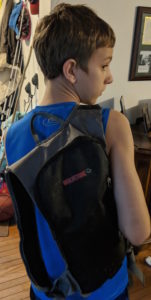 At this point in their life, the middle school and high school years, your child will start to “come into their own.” In addition to developing their independence, hopefully, they’ll begin to experiment with their EDC pack as well. At this point, you are relegated to offering tips rather than providing instruction. Their kit may beef up, and it’s really about experimenting for them at this point.
At this point in their life, the middle school and high school years, your child will start to “come into their own.” In addition to developing their independence, hopefully, they’ll begin to experiment with their EDC pack as well. At this point, you are relegated to offering tips rather than providing instruction. Their kit may beef up, and it’s really about experimenting for them at this point.
Setting Up Their EDC Bag
This pack will begin to resemble your own with each iteration. You’ll want to remind them to re-evaluate their pack on a regular basis. Are there things they haven’t used since the pack was built? Is it time to upgrade their packs? Take some time to read the instructional on setup and maintenance of an EDC bag here to help them along.
While you can introduce your child to the EDC lifestyle in this age group, it’s far more difficult to get them to adopt it. I’m assuming by this point, your child has increased their on person EDC arsenal without even realizing it. They’ll probably have begun carrying a wallet, and a cell phone at the very least. Try to draw comparisons between your EDC loadout and what they already carry. This may help build the proverbial bridge between what they already do, and what they should do.
EDC and Their Independence
As your child enters into their later years, the may begin straying from the EDC philosophy. Things like having a car, going out on dates, and other freedoms can result in a lack of commitment to their EDC preparation. It’s far more convenient to leave their EDC pack in the car than bring it on a date. Now’s the time to reinforce the fundamentals of everyday carry. Remind them, it’s better to have their pack and not need it, than need it and not have it.
Here’s an opportunity to discuss some of the finer points about their loadout. Pose everyday scenarios that can occur and ask them how they are prepared to handle them. Below are some examples:
- They are out alone and lose their keys and phone. How do they get home?
- They are out on a date and get robbed. They no longer have their pack, phone, or wallet. What now?
- Their friend eats something that causes an allergic reaction. How do they respond?
- They are out with friends, and when they get back to the car the battery is dead. What do they do?
This will force them to have an intimate knowledge of their own packs and their own limitations to respond. It may also spark their creative juices, and they’ll begin asking themselves questions. Should I have a burner phone? Should I keep cash hidden on me? All of this breeds creativity and ultimately enhances their EDC arsenal.
Talk About Other EDC Options
I allude to this in the previous section, but now is probably the time to discuss other types of everyday carry. You’ll be able to approach topics like their on person EDC kit, and what should be included. All to often in this day and age, people lack the necessary cash for emergencies. Power outages can prevent you from purchasing much-needed gas. Not having your wallet or phone means they may need to hop a cab to get home.
If your teen is driving, perhaps it’s time to discuss things like their EDC car loadout. Are they capable of jumping their own car if they get stranded on a backroad? Talk about the common tools they should have, and how to build their EDC car kit. You can have all different types of kits for work, bugging out, and the list goes on.
Late Adolescence (Ages 17-18)
By now, you’re probably reeling from the thought of empty nest syndrome. Hopefully, you’ve instilled at least the basics of EDC in your child, because like it or not, they’ve become their own person. Maintaining their EDC kit is a matter of habit at this point.
Ask them questions about their kit to keep it at the forefront of their mind. Perhaps they’ve made adjustments that you could benefit from in your pack. Keep the conversation light and friendly. Pushing hard will likely result in them revolting. A good way to do this is by asking about instances where their pack has come in handy.
When your child turns 18, they’re considered adults. At this point in their life, they’ll be headed off to college or into the workforce. If you’ve failed to discuss an EDC kit, your best option is to build them one and hope it’s around when they need it. Presumably, you can clone your own setup, and omit anything they don’t have the knowledge to use. While it isn’t ideal, this is your best option when it comes time for the chicks to leave the nest.
Parting Shots
Putting together a kit for your child isn’t difficult, it just takes time and patience. Instructing your child on why it is important and how to use the items in their kit is what really makes a difference. Only you can assess when the time is right to discuss the dangers your child may have to face. You are also the person to help instruct them on how to survive those dangers.
Your child will always be your baby, and my mother is fond of reminding me about this. Even after they’ve grown into adults, you can continue to give them useful tips and tools. Remember that the grade school days are just the beginning. Check out the recommended gear section for my top picks if you’re having trouble deciding on something. As always, please leave comments if there’s anything I missed.
